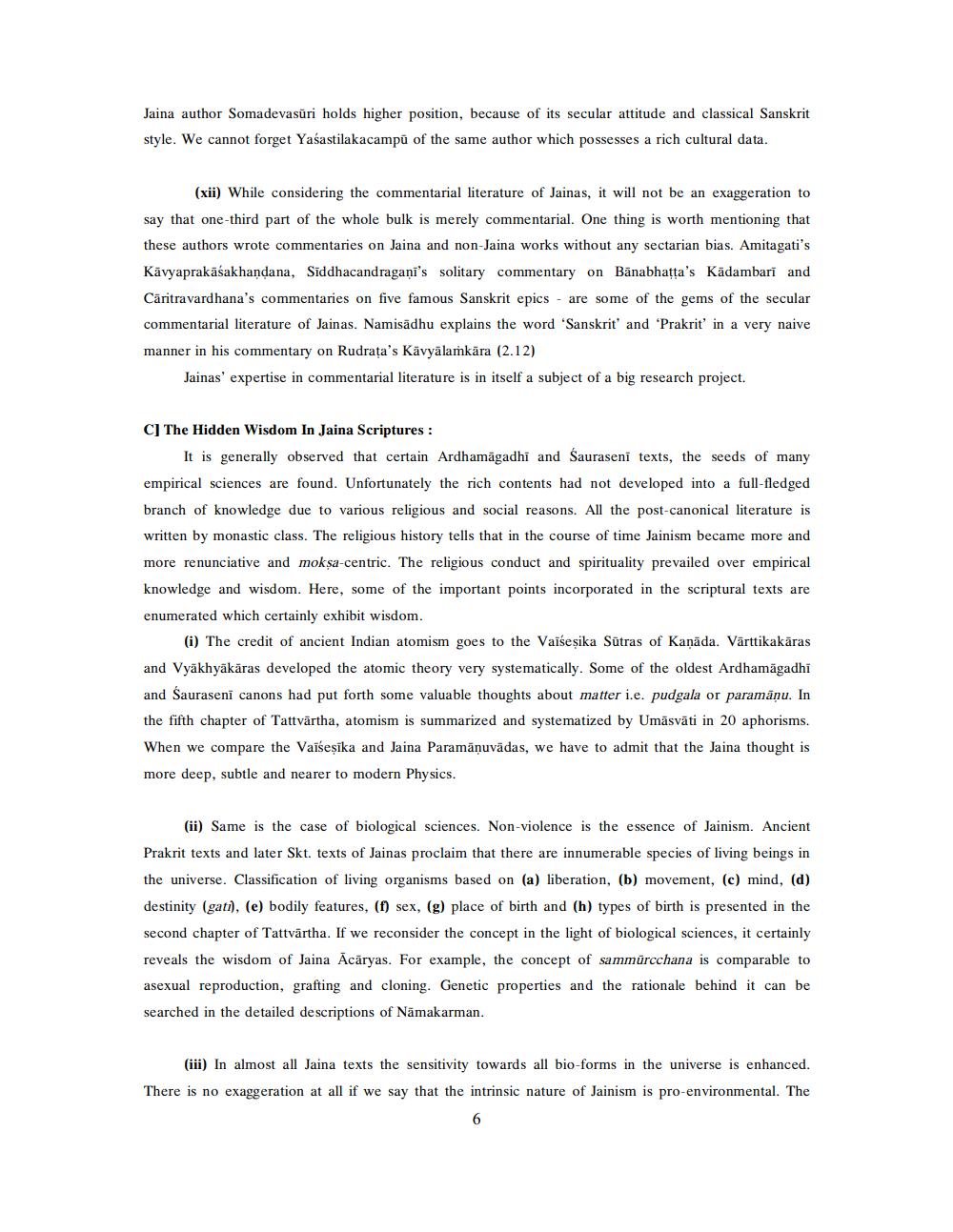Book Title: Wisdom in Jain Tradition Author(s): Nalini Joshi Publisher: Nalini Joshi View full book textPage 6
________________ Jaina author Somadevasūri holds higher position, because of its secular attitude and classical Sanskrit style. We cannot forget Yaśastilakacampū of the same author which possesses a rich cultural data. (xii) While considering the commentarial literature of Jainas, it will not be an exaggeration to say that one-third part of the whole bulk is merely commentarial. One thing is worth mentioning that these authors wrote commentaries on Jaina and non-Jaina works without any sectarian bias. Amitagati's Kävyaprakāśakhandana, Siddhacandragani's solitary commentary on Bānabhatta's Kādambari and Căritravardhana's commentaries on five famous Sanskrit epics - are some of the gems of the secular commentarial literature of Jainas. Namisadhu explains the word 'Sanskrit' and 'Prakrit' in a very naive manner in his commentary on Rudrata's Kävyälamkära (2.12) Jainas' expertise in commentarial literature is in itself a subject of a big research project. C] The Hidden Wisdom In Jaina Scriptures : It is generally observed that certain Ardhamāgadhi and Sauraseni texts, the seeds of many empirical sciences are found. Unfortunately the rich contents had not developed into a full-fledged branch of knowledge due to various religious and social reasons. All the post-canonical literature is written by monastic class. The religious history tells that in the course of time Jainism became more and more renunciative and moksa-centric. The religious conduct and spirituality prevailed over empirical knowledge and wisdom. Here, some of the important points incorporated in the scriptural texts are enumerated which certainly exhibit wisdom. (i) The credit of ancient Indian atomism goes to the Vaiseșika Sūtras of Kanāda. Värttikakāras and Vyakhyākäras developed the atomic theory very systematically. Some of the oldest Ardhamägadhi and Sauraseni canons had put forth some valuable thoughts about matter i.e. pudgala or paramānu. In the fifth chapter of Tattvärtha, atomism is summarized and systematized by Umāsvāti in 20 aphorisms. When we compare the Vaišeşīka and Jaina Paramānuvādas, we have to admit that the Jaina thought is more deep, subtle and nearer to modern Physics. (ii) Same is the case of biological sciences. Non-violence is the essence of Jainism. Ancient Prakrit texts and later Skt. texts of Jainas proclaim that there are innumerable species of living beings in the universe. Classification of living organisms based on (a) liberation, (b) movement, (c) mind, (d) destinity (gati), (e) bodily features, (f) sex, (g) place of birth and (h) types of birth is presented in the second chapter of Tattvärtha. If we reconsider the concept in the light of biological sciences, it certainly reveals the wisdom of Jaina Ācāryas. For example, the concept of sammürcchana is comparable to asexual reproduction, grafting and cloning. Genetic properties and the rationale behind it can be searched in the detailed descriptions of Nämakarman. (iii) In almost all Jaina texts the sensitivity towards all bio-forms in the universe is enhanced. There is no exaggeration at all if we say that the intrinsic nature of Jainism is pro-environmental. ThePage Navigation
1 ... 4 5 6 7 8
